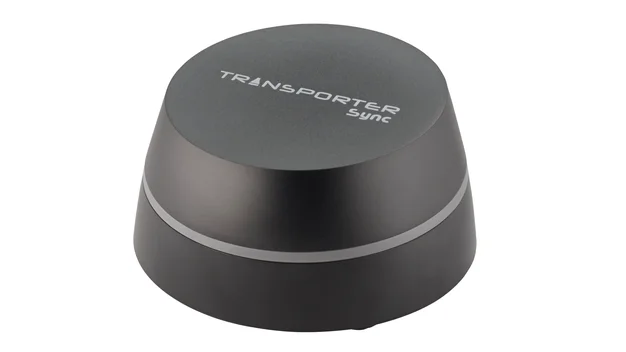Connected Data Transporter Sync review

Easy to set up remote access, but fiddly to use and slow
Specifications
Capacity: N/A, 3.5″ hard disk bays (free): 0 (0), Networking: 1x 10/100/1000 Ethernet, DLNA media server: No, Print server: No, Dimensions (WXHXD): 100x50x100mm, Weight: 0.23kg
The Connected Data Transporter Sync is an alternative to cloud services such as Dropbox. Plug a USB hard disk into the Sync then connect it to your router and you’ll be able to access your files from any computer with internet access.
Connected Data claims the Transporter Sync is a more economical alternative to cloud storage services, and USB storage is indeed cheaper than cloud storage in the long run. A 1TB USB hard disk costs just £45, while 1TB of Google Drive space will cost $120 (£71) per year. Remote access technology is nothing new (it’s a common feature in NAS devices), but the Transporter Sync is far easier to set up than any NAS we’ve tried.
Once you plug a USB disk into the Sync, it’s automatically reformatted into a proprietary format. This means you can’t use a disk that’s already been filled with the files you want to access, which is inconvenient. The Sync’s indicator light flashes blue and green while formatting, and it took around an hour to format our 1TB, 5,400rpm USB3 portable disk. Once it has finished formatting the disk the light stays blue.
To access the disk you must create an account on Connected Data’s website and then install apps on your devices. There are apps for Windows, Mac OS X, iOS, Android and Kindle Fire, and these apps let you access your data. If you want to change the few settings the Transporter Sync has, you’ll have to use the web management interface. There’s no fiddling with port forwarding settings on your router or setting file permissions.
Under Windows and Mac OS X, the Sync’s disk appears not as another disk or as a network share, but as a special Sync folder at the root of your User folder. Any files in this folder are automatically copied on to your other Windows PCs and Macs and, space permitting on their internal disks, can all be accessed even without an internet connection. If you want, you can set the Windows and Mac apps to mirror the contents of other folders, such as Music and Photos, to the Sync folder automatically.
Inside this Sync folder is another folder called Library. Any files in the Library folder aren’t automatically copied onto your other computers, so you’ll need to use the internet to access them. It’s a confusing distinction, especially as there’s effectively no distinction between the two folders when accessed from a mobile device. All files, whether in the Sync or Library folders, can only be accessed if you are online. There’s no way to cache specific files for offline viewing.
The iOS and Android apps are very crude, especially compared to the apps for cloud storage services such as Dropbox. With the desktop apps you can create a link for your files so you can share them with others, but this option is unavailable in the mobile apps. Bizarrely, you can’t sort the file list, preview the contents of a file, upload files or download a folder with a single tap. The workaround for the latter is to open the folder, select all the files inside and then download them all. You can’t even stop a download once you’ve started it, which is especially annoying if you’ve accidentally started downloading a very large file.
The speed with which you can access your files obviously depends on both the upload speed of your home broadband connection as well as the download speed of your remote device. Even so, accessing files from our Sync, which was connected to a cable line with a 43Mbit/s upload speed, on an Android phone with an EE 4G 20Mbit/s download speed was remarkably slow, with a 3MB file taking four minutes to download.
Copying files to the Sync disk isn’t fast either. When using a laptop connected to the Sync through a 5GHz 802.11n network, it only managed a glacial 1.44MB/s overall for large files and an even slower 0.92MB/s for small files, which is equivalent to an old USB1.1 disk.
The Transporter Sync is a great idea and is almost painless to set up, but it’s hard to recommend. Even if you have terabytes of data that you want to access remotely, the slow performance, spartan mobile apps and the needlessly confusing distinction between Sync and Library is very off-putting. If you really want remote access to your files without using cloud storage services, we’d recommend using a NAS such as the Synology DS213j instead. It’s a bit more fiddly to set up, but in the long run it’s far less hassle.
| Hardware | |
|---|---|
| Capacity | N/A |
| Default file system | Proprietary |
| File attribute support | yes |
| Price per gigabyte | N/A |
| Hard disk interface | USB2 |
| 3.5″ hard disk bays (free) | 0 (0) |
| RAID modes | none |
| Interfaces | |
| Networking | 1x 10/100/1000 Ethernet |
| Front USB ports | none |
| Rear USB ports | 1x USB2 |
| Other ports | none |
| Networking | |
| Universal Plug and Play | No |
| DLNA media server | No |
| Print server | No |









